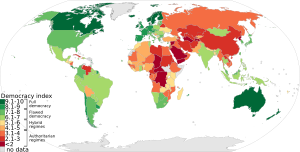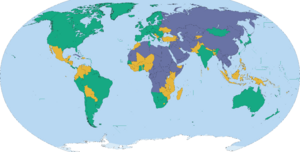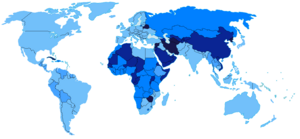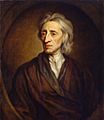Democracy facts for kids
A democracy is a way of governing where the people have the power. The word "democracy" means "rule by the people." In a democracy, citizens can help make decisions about how their community is run.
There are different ways this works today:
- Direct democracy: People meet and vote directly on new laws or changes to old ones.
- Representative democracy: People choose leaders through elections. These leaders then make decisions about laws for everyone.
- Sometimes, people can suggest new laws or changes using a referendum. This is a special vote where everyone in the community votes on a specific issue.
- In some cases, decision-makers are chosen randomly, like when picking a jury for a trial. This is called sortition.
To become a strong democracy, a country usually goes through a process called democratic consolidation. This means it becomes stable and less likely to turn back into a dictatorship.
A democracy is the opposite of a dictatorship. In a dictatorship, one person holds all the power. People have little say in politics and often have limited freedom to express themselves.
Contents
How Governments Work in a Democracy
After an election, the winners are chosen. Sometimes, the person with the most votes wins. Often, the politicians who are elected belong to a political party. Instead of voting for just one person, people might vote for a party. The party with the most votes then chooses its leaders.
People who are elected usually need to meet certain requirements. For example, they might need to be a certain age.
Not everyone can vote in an election. Only citizens are usually allowed to vote. Some groups, like prisoners, might not be able to vote.
In some countries, voting is required. If someone doesn't vote without a good reason, they might have to pay a fine.

Kinds of Democracy
Democracy can be direct or indirect.
Direct Democracy
In a direct democracy, everyone has the right to help make laws. A modern example is a referendum. This is when everyone in a community votes directly on a proposed law.
Direct democracies are not usually used to run whole countries. It would be very hard for millions of people to meet all the time to make decisions. There simply isn't enough time for everyone to vote on every single issue.
Representative Democracy
In an indirect, or representative democracy, people choose representatives to make laws for them. These representatives can be mayors, council members, or members of Parliament.
This is a much more common type of democracy. Large communities like cities and countries use this method. It allows decisions to be made more efficiently.
History of Democracy
Ancient Beginnings
The idea of democracy started a long time ago with the ancient Greeks. It began in classical Athens. In Athens, all citizens could gather in one place. (It's important to know that in ancient Athens, only free men born in Athens were considered citizens. Slaves, women, foreigners, and children could not participate.)
This assembly would discuss and vote on laws. A group called the Council would suggest the laws. Members of the Council were chosen by lottery (random draw). The Council members would change every year, and there were up to 500 people in the Council. For some important jobs, Athenian citizens would vote for a leader by writing their favorite candidate's name on a piece of stone or wood. The person with the most votes became the leader.
Democracy in the Middle Ages
In the Middle Ages, there were some systems where people could participate, but usually only a few. The Parliament of England started because of the Magna Carta. This was a very important document from 1215. It said that the King's power was limited and protected some rights of the people.
The first elected parliament in England was De Montfort's Parliament in 1265. However, only a very small percentage of people could actually vote back then. For example, in 1780, fewer than 3% of people could vote. The ruler also had the power to decide when Parliament could meet.
Over a long time, the power of Parliament grew. After the Glorious Revolution in 1688, the English Bill of Rights 1689 made Parliament even more powerful. Eventually, the ruler became more of a symbol than someone with real power.
Becoming a Strong Democracy
Democratic consolidation is when a new democracy becomes strong and stable. Once a democracy is consolidated, it is very unlikely to turn back into a dictatorship. This means that elections are truly free and fair, and powerful groups cannot stop the system from working properly.
Related pages
- Majority rule
- Direct democracy
- Political party
- Constitution
- Constitutional economics
- Political economy
- Election
- Rule of law
- Citizenship
- Activism
- Politics
Images for kids
-
A person casts their vote in the second round of the 2007 French presidential election.
-
The Magna Carta, a very important document from 1215 in England.
-
John Locke was an important thinker whose ideas helped shape modern democracies. He believed in natural rights and that governments should rule with the consent of the people.
-
Corazon Aquino taking her oath to become the first female president in Asia.
-
A Landsgemeinde in the canton of Glarus, Switzerland, in 2009. This is an example of direct democracy.
-
Queen Elizabeth II, a constitutional monarch. In a constitutional monarchy, the monarch's power is limited by a constitution.
See also
 In Spanish: Democracia para niños
In Spanish: Democracia para niños

















